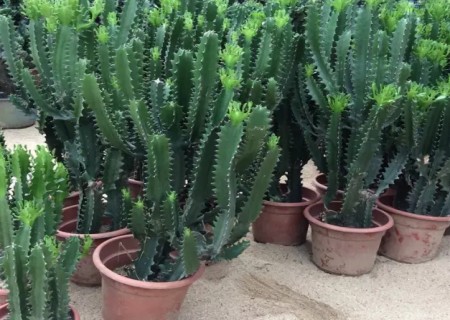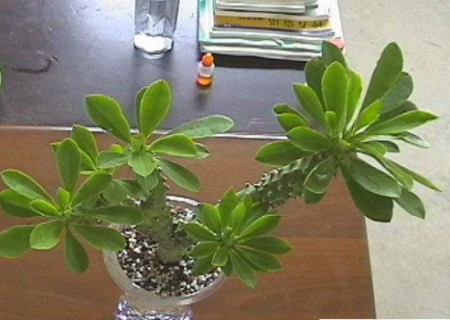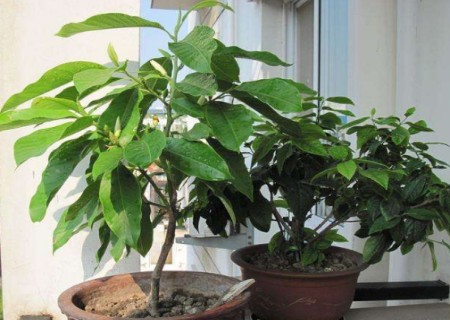Culture method of potted keel flower
The keel is a climbing shrub with a sword-like stem, huge flowers and fireball-like fruit, its stem is green, the flowers are big and white, the fruit is as red as fire, and it is widely planted in the tropics, so it is planted in the corner and edge of the exhibition greenhouse, which can show the tropical rain forest scenery. the hot spots of tropical rain forest customs are colorful, colorful and green, while the keel happens to be the stem green, and the flowers are big and domineering. And the keel belongs to the cactus family, and it feels like growing in a tropical desert, so it is full of tropical rain forest amorous feelings.
In addition, the keel is also suitable for European-style pastoral, although the European-style pastoral style is more in front of the door, the window is full of flowers and plants, but in order to create a more authentic amorous feelings, often in the top corner of the cabinet put a pot of green vines, keels can also be planted in the balcony, a show enthusiasm, when the keel flowers, like a flower curtain from the sky, set off warm, full of vitality.

Generally speaking, the collocation of household style, especially the embellishment of plants, is indispensable, otherwise without these lively plant embellishments, the atmosphere of the family is very difficult to be active, and it seems to be less of a natural scenery. more people feel lifeless. So, how to raise potted keel flowers? The following is for you to introduce the culture methods of keel flower:
1. Soil
Keel is very easy to survive, like loose, fertile, humus-rich sandy soil. Pot soil can be mixed with 1 part of rotten leaf soil and 1 part of coarse sand and mixed with a small amount of mature chicken manure or cow manure. If it is difficult to find this kind of sandy soil, you can find some softer soil at will. The keel is not too demanding on the soil, and the general soil can feed it.
2. Lighting
Suitable for growing in semi-shade conditions, although resistant to sunlight, but in order to avoid yellowing in strong light, shading measures should be taken in summer, put in the light in winter, accept a certain amount of sunlight. Indoor plants had better be placed in places such as balconies and windowsills where light can be seen.
3. Temperature
The dragon bone flower likes the warm environment, is not cold-resistant, is afraid of frost, the winter temperature should be above 10 ℃ in order to survive the winter smoothly, and give the right amount of uniform light, not less than 7 ℃ to avoid frostbite.
4. Watering
Watering in spring should not be excessive, watering should be done every 10-15 days, but water should be sprayed to the plant every day to increase air humidity. It should be watered once a day in summer, preferably in the morning or evening. The basin soil should be kept moderately dry in winter. Keel flower is resistant to drought and should be watered properly. Water can be watered every five days in summer, if the basin soil is too wet for a long time, it will cause rotten roots. Watering water once a month during the winter dormancy period will not dry to death.
5. Fertilization
The dragon bone flower can apply thin fertilizer every 15-20 days during the growing period, and it is better to use self-made fertilizer. After crushing soybeans or peanuts, they can be buried in flowerpots, or soaked and rotten, and then buried in the soil to apply fertilizer. Such as granular compound fertilizer or self-made alum fertilizer water, can promote plant growth, mainly do not apply too thick fertilizer, easy to cause fertilizer damage and root rot problem.
6. Pruning
The tip of the newly cultivated plant can be removed when it reaches 10-15cm, and the new branch only needs to retain the three branches with good growth at the top of each corner. When the plant grows to 20-25cm, the top is removed, and then the top is removed according to the length of the previous branch plus 10 cm. Pay attention to determine the direction of the branch according to the ornamental angle. Such a trimmed keel flower plant type is plump, rich ornamental.
In addition, in order to prevent the keel plant from aging prematurely and maintain the vitality of its base, attention should be paid to frequent pruning. Cut off some old branches that are not very flowering, and at the same time remove the weak buds growing below, so that the terminal buds are fully developed, elongated, and bloom more.
Overwintering
Plastic film can be used to cover the basin to protect overwintering. The overwintering cultivation environment should maintain both high temperature and high air humidity. In winter, sufficient light is required, put in the sunny place indoors, the temperature should be kept above 10 ℃, and turn the basin at regular intervals. Keel can not be raised indoors in the north, and it is easy to be frostbitten to death.
8. Insect pests
Keel column insect pests are less, indoor ventilation is poor, easy to be damaged by red spiders at the top, found that the top of the branch reddish brown, with mesh, can be used 1000 times to 2000 times omethoate spray, the dosage is not too large, to prevent head fester.
Time: 2019-05-31 Click:
- Prev

The culture method of jade unicorn flower
Jade Kylin likes warmth and requires plenty of sunshine, which is suitable for sandy loam with good drainage. Drought-resistant, not cold-resistant, but resistant to half-shade, suitable for family potted ornamental. It has green and beautiful leaves, fleshy stems and leaves, and elegant plant shape, which is very similar to the unicorn in ancient Chinese legend, so it is named Jade Kylin.
- Next

Culture methods of family potted white orchids
The wind breaks the green lotus moss, the flower meaning is still lower than the white jade face; a charm is not easy to send, fragrance from all over the world. This is the description of the white orchid by Yang Wanli, a patriotic poet of the Southern Song Dynasty. Magnolia magnolia is a kind of traditional famous flowers and trees with white and beautiful colors and fragrance. When it blossoms, it is like a sea of snow waves and clouds, which is spectacular.
Related
- Fuxing push coffee new agricultural production and marketing class: lack of small-scale processing plants
- Jujube rice field leisure farm deep ploughing Yilan for five years to create a space for organic food and play
- Nongyu Farm-A trial of organic papaya for brave women with advanced technology
- Four points for attention in the prevention and control of diseases and insect pests of edible fungi
- How to add nutrient solution to Edible Fungi
- Is there any good way to control edible fungus mites?
- Open Inoculation Technology of Edible Fungi
- Is there any clever way to use fertilizer for edible fungus in winter?
- What agents are used to kill the pathogens of edible fungi in the mushroom shed?
- Rapid drying of Edible Fungi

